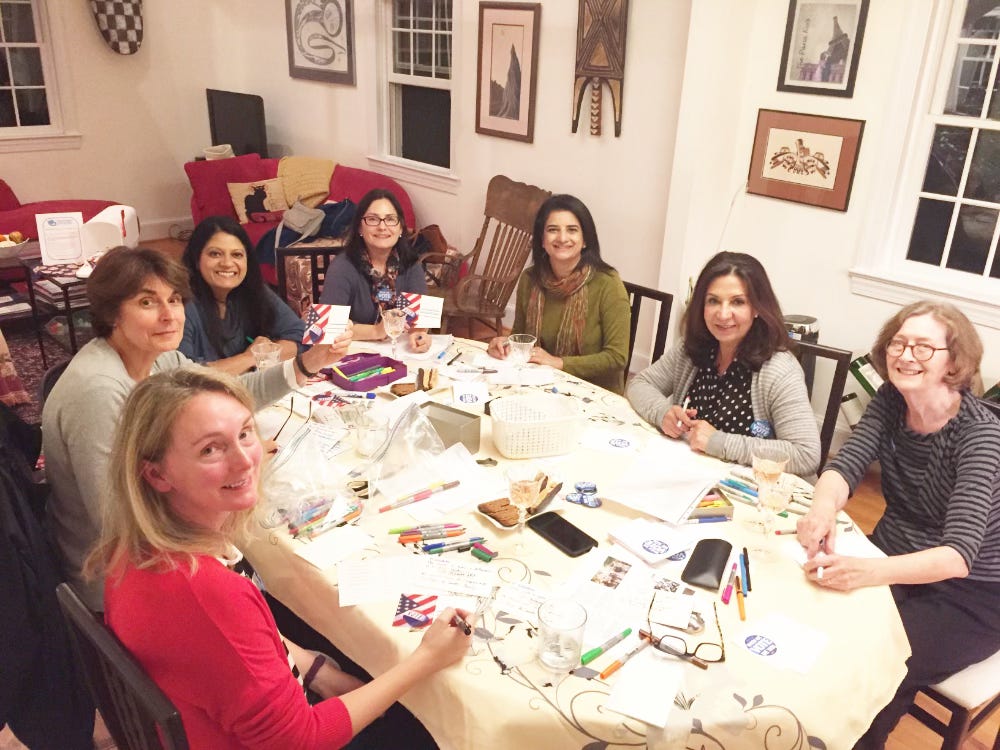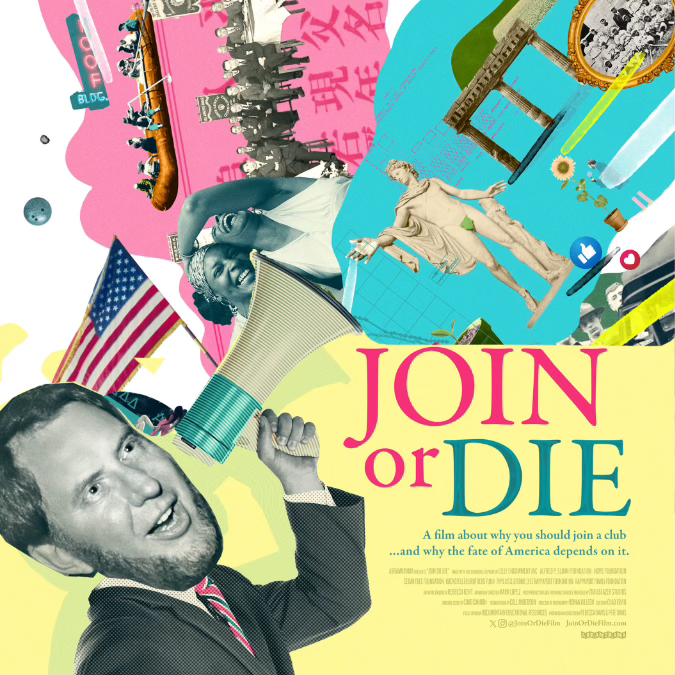“What are you most proud of?” was the last question I asked of postcard writers during interviews to gather their stories and document their work. Interviewers like me expected to hear postcard writers’ stories about the number of postcards they had written or a list of candidates they had supported. But no. Time and again they said they were most proud of the community they helped build. Many started writing postcards out of a need to do something, but they continued participating year after year because of the friends they made and the role that community plays in their lives.
The importance of community is not unique to postcard writers. In fact, postcard writers are a microcosm of the overall grassroots. The mission of the Grassroots Connector is to amplify the voices and power of the grassroots. For the new year, the editorial board compiled working definitions of what we mean when we say, “the grassroots” and we were delighted to see readers add to our collective definitions. We are now going further to examine one of the core attributes of the grassroots, our ability to build community. Or, as we like to say, community is our superpower.
Many Groups United By Purpose
Crammed into a church basement on a side street in Arlington, VA, sat some 50 people, all strangers to each other. Each person represented a newly formed grassroots group. It was 2017, the Women’s March and Trump’s inauguration barely in the rear-view mirror. The people sitting in the folding chairs were schoolteachers and college professors, small business owners and consultants, retired federal employees and farmers, parents, students and a whole lot of attorneys. Most had little political experience. What brought them together was a common belief that there was something worth protecting. This diverse group of newly minted leaders started meeting monthly. Its goal was to resist the Trump presidency and flip the Virginia state legislature blue. Many victories and a few disappointments later, the Virginia Grassroots Coalition is still going strong. The coalition has grown to some 270 affiliated and unaffiliated groups, and holds meetings on zoom nowadays, but the purpose and conviction has never wavered. A version of this story exists in many states.
Today’s political grassroots do not issue membership cards or require dues but rather count members as those who choose involvement. Reading the emails, attending meetings whether in person or on Zoom, those are the characteristics of membership. In fact, some of the most well-known and engaging groups have no official membership structure.
The grassroots groups build a sense of community in different ways. Some do it through ongoing programs like Network NOVA weekly live podcast, Friday Power Lunch or Markers for Democracy 3 mornings a week Zoom postcard writing sessions. Others do it through online reader interaction. Substack newsletters like Simon Rosenberg’s Hopium Chronicles, Robert Hubbell’s Today’s Edition Newsletter and Jessica Craven’s Chop Wood, Carry Water have become as much community hubs as information sources.
People often belong to more than one group. If grassroots activists are asked to put down their group affiliation they often inquire: which one? This crossover and cross-pollination are welcome, common, and encouraged.
These communities are usually not run by local or state parties. Though members of state parties may belong to them and some county parties do develop communities of activists.
The beauty of today’s grassroots is that there is no top-down structure that controls it. A common lament by campaign veterans is that the volunteer army built by the Obama campaign was terminated after the campaign. Today’s grassroots are decentralized, which means no organization or individual can pull the plug.
Revitalizing Community Strengthens a Healthy Democracy
Much has been written about the important role of community life in America’s history. Plenty of factors have weakened once strong community groups. In 2000 American political scientist Robert David Putnam’s groundbreaking book, Bowling Alone: The Collapse and Revival of American Community documented the unraveling of this cultural tapestry.
Then came social media and the pandemic, which further isolated individuals. In stay-at-home mode, more people became accustomed to withdrawing from public spaces. They tunes into online sources for news and social engagement . The 2023 documentary of Putnam’s work, Join or Die revisits the unraveling of civic associations asking three urgent questions: What makes democracy work? Why is American democracy in crisis? And, most importantly... What can we do about it?”
Though Trump acts as if he won by a landslide, the numbers tell us that 19 million people who voted for Biden in 2020 stayed home. As Michael Podhorzer (former political director of the AFL-CIO) has so elegantly pointed out in his article “How Trump Won: The Anesthetized Anti-MAGA Majority,” voters didn’t shift so much to the right this election, they shifted to the couch.
The grassroots bring many things to today’s crazy political environment. Like the postcard groups who get back to workdays after an election no matter the outcome, the community ties grassroots groups build are an important part of how we address today’s reality.
Though we were ultimately unsuccessful in the presidential race, the work done was impressive. We need to recognize the many wins on the local level, where the grassroots community has the greatest impact. Trump’s margin of victory was just 1.5%, historically small by all accounts. It was the work of the grassroots that almost beat an insidious propaganda machine that has been left to infiltrate the nation unfettered for decades.
As Jessica Craven wrote in her January 21, 2025 Substack “Chop Wood, Carry Water”:
We are a force to be reckoned with. We have agency, intelligence, courage, strength, and vast numbers on our side…We have a ton of experience winning tough fights. Most importantly, we have each other.
As Democrats regroup and chart a way forward, we need to remember that we're already doing the important work every time we gather. Though authoritarian leaders will try to divide us, we need to keep on. It's up to us to help the grassroots grow.
As any arborist will tell you, the roots are the most important part of the tree. We are the roots of democracy. We are the roots of any campaign. We are the grassroots.
By Robbin Warner and Susan Wagner
Please comment on the role of community in your political activism.









Dear Robbin and Susan,
Thank you for this beautiful description of the phenomenon that I have been blessed to experience firsthand. When a group of us sat down that first time during the FIRST, first 100 days to write Women's March postcards to the White House, none of us ever imagined that we would still be at it 8 years later.
Despite the best efforts of authors like Simon Rosenberg and Heather Cox Richardson, the power of the grassroots seems to continue to fly under the radar. (but we are here!)
During these years, our skill sets have been honed, relationships strengthened, and scope broadened. Yet the "organization" remains fluid. It is magical, as are the deep friendships that have grown spontaneously from this work.
I don't know where I would be without the various grassroots communities that I hold dear. I recognized that I had been way too complaisant after the 2016 election and haven't looked back since.
But I am still trying to come to grips with the number of people who either thought voting for Trump or staying home was a good idea in November. I'm firmly in the camp that when someone shows you who they are you should believe them. What were people thinking!!!
I'm not sure of the solution, but I am NOT giving up!!